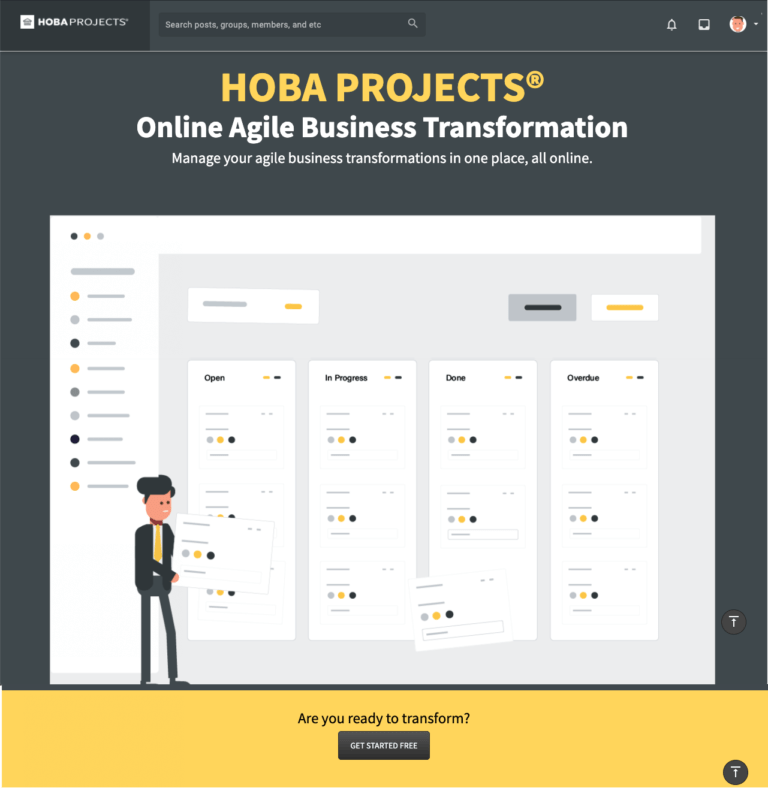If you help your organisation or clients organisation tackle their digital business transformation, then this is for you.
Regardless of the fact that technology change has been around for a while, the exponential rate Organisations are investing in digital transformations has never been seen before.
On first impressions, the driver for this surge could be mistaken for Organisations wanting to be at the forefront of the trend to maximise the benefit of this digital disruption, or what no one is talking about – the Fear Of Missing Out (FOMO) on opportunities due to being digitally ‘handicapped’.
So before the Client comes to you, looking at the market changing by the rate of technology change, change in customers and buying behaviour or market share and screaming “the sky is falling”, take a minute to pause, and reflect for a minute to make sure, before you or others start recommending and therefore implementing solutions, that first – you separate the noise from the hysteria, understand the real question, action, drivers and steps to start helping the client and adding real value from the outset.
In this post we will cover:
- The real Question
- The 4 main areas of DX
- The 6 drivers, and
- 4 Step Action Plan
The Real Question
As popular as they are, understanding digital transformations, its areas, what drives it and what makes it successful is often perceived as a vast and complex concept, something that consultants still struggle with. In fact, it’s surprising to see that business transformation consultants still haven’t quite grasped the full concept, benefits and implementation of agile business transformations.
As transformation consultants, people that do business transformation for a living (not theorise about it), but in the coal facing practising what we preach, the question we are asked most by our clients and peers in the industry is ‘how business transformation consultants can improve their own strategies and satisfy clients?’
So, we’ve rounded up the shortlist of important aspects that make a business transformation successful to help you answer that question quick.
The Four Main Areas of Digital Transformation
Before we get into further details, it’s important to briefly discuss the areas of digital transformation. When a client comes to you, they know they need to change, but might not be sure, what exactly they want or need to change. They have a problem, they just want you to fix it. You will add more value but providing them the short list. These are the main areas the Organisation will ultimately be changing:
- Business Process
This involves transforming business processes, services and models that are currently being used in your organisation, and in most cases does that by introducing technology to enhance the overall performance.
For instance, the automated process of being able to order food online from any device, and follow its progress from the kitchen to your front door has completely transformed the end-to-end food delivery process, compared to how take-away used to be enjoyed from your favourite local restaurant.
- Business Model
Business Model transformations looks at the infinite possibilities of business models, and how innovation can be used to bring about opportunities for growth. It looks at the basic blocks of how a business creates value, and how they can be continuously improved.
A prime example of this is how Netflix has taken the world by storm – transforming the conventional mailbox DVD video distribution to the global streaming service it is today.
Get your hands on my tried-and-tested Transformation Playbook to effortlessly transform your business model!
- Domain
Domain Transformations look into the ability of an organisation to expand into another domain or field – related or unrelated to its current operations. Organisations can unlock opportunities where new benefits can be offered, and new value can be created.
FYI – Here’s a little background into why consultants should focus on providing benefits more than anything else when during a transformation.
With technology advances, industry boundaries have become blurred which has created new opportunities that were not possible before.
The most relevant example for a successful domain transformation is the leading online retailer, from an online book store, to ‘everything-store’ to Amazon and their launch of the Amazon Web Services (AWS), now the largest cloud computing service.
With strong digital capabilities coupled with strong relationships with thousands of small companies needing computing services, Amazon was able to infiltrate into an entirely new market that was previously dominated by giants like Microsoft and IBM.
- Cultural
A complete, enduring digital transformation can only be successful if it involves redefining the entire organisational culture, mind-sets, processes, talent and capabilities.
The people that will operate, implement and experience it – employees, partners and supplier firstly (then customers and clients to a lesser extent) need to be on board with the transformation in order to fully realise its benefits.
In today’s world, technology is unavoidable, technology change is inevitable. However, as consultants – by better understanding that digital transformation is not narrowly defined but rather multi-dimensional and touches multiple areas at one time, you need to educate your clients that ‘digital transformation’ is not just replacing the old tech for the latest faster version, you will be able to help your Client make their digital transformation successful, but most importantly gain the full value out of it.
Here’s a free training that might help!
A complete, enduring digital transformation can only be successful if it involves redefining the entire organisational culture, mind-sets, processes, talent and capabilities.
Heath Gascoigne Tweet
What Drives a Digital Transformation?
Before you embark on this journey with your Clients, it’s crucial that the need for the transformation is highlighted and well understood first. From your, Consultant perspective, if you want to get momentum fast with the client and their transformation, you want to present a few options to first show that you understand their plight, and second you have a strategy to address it.
Over my tenure of conducting successful digital transformations, I have seen that many organisations, regardless of their type, size and industry, share common drivers for their transformations. Here are my top six (6):
- Better customer experience
No matter what corporation, this goal is crucial for any thriving business. Digital transformations often significantly improve customer experience, care and satisfaction.
As an example, Amazon offers a section of recommended products. With digital transformation, Amazon is able to offer a customised recommended products list, tailored to each user’s browsing history.
- Organisation Agility
Technology allows for better connected teams, enhanced collaboration, seamless processes and strategic decision-making, all of which contributes to organisation agility.
For instance, with digital transformation, multi-national corporations can have a more cohesive workforce, as they can collaborate online more effectively.
- New Business Models
The digital world has revolutionised business models, in some cases forcing digital adoption to just remain competitive, and new businesses adopting a digital-first business models from the start. One example would be Spotify, well known and used music ‘supplier’, all online, on subscription – free/freemium, or paid, never planned to open a physical store, virtually completely digital.
- Cost Reduction
With digital transformations, businesses look to reduce costs in numerous ways, whether it’s labour, capital or equipment costs. For instance, automation allows processes to become efficient and reduce overall costs. Moreover, the introduction of cloud-based systems has allowed for significant reductions in physical infrastructure management.
FYI – I have compiled a detailed guide that’ll help you understand where business automation might work and where it might not.
- Employee Performance
With more efficient procedures and equipment in place, employees will have all the tools to perform more efficiently and improve productivity. For instance, an employee no longer has to hold for phone support or communicate through a tedious process of emailing to get an issue resolved. Automation and paperless operations streamline formerly highly manual and repetitive processes.
- Compliance with Data Security
With an influx of technological involvement within an organisation, data security has become a major concern. With cybercrime increasingly becoming a cause for concern, digital transformation works to come up with newer ways to provide protection.
For instance, Apple has come up with a rigid protection procedure to protect its customers, from the two-factor authentication process to using Face ID to enhance security, which was only possible with digital transformation.
So, when you Client says “I’ve got a problem, but I just can’t put my finger on it?’” run through that short shopping list and say, ‘let me guess.. its it one of these?’ That will help get the conversation started and building some rapport that you at least know of the main drivers, the next part is how to solve them.
Regardless of the type of transformation, drivers of it, or the size of an organisation, there is still that one little problem: implementation. 70% of all transformations fail, not based on the design (so much), but the effective implementation of the transformation.
So you “don’t boil the ocean” (something I see Consultants too all the time), and get to work right away helping your client, we have a 4-step action plan and some potent blueprints and framework that as consultants you can implement to ensure your clients become part of the 30% that succeed.
The Action Plan
1. Figure out the strategic vision
Before you begin, your first step should be to assess where your client is currently, their strategic goal and where they wish to be. Figure out what type of digital transformation you need to focus on, and where you want the digital transformation to take place (throughout the organisation, just in a few departments?).
2. Transformation Framework
Agree the underlying transformation framework to ensure processes and methodologies are controlled and the Client Organisation’s employees know what to do. This framework should also maintain a set of working guidelines to provide stability to and throughout the transformation journey.
3. Integration Platform
For a transformation to be deemed successful, it’s essential to integrate the people, processes and technology. Ensure that your Client understands that people involved are committed to the project, processes are running efficiently and applications are seamlessly linked to avoid disruption.
4. Use Outsiders to Develop Insiders
It’s crucial to develop a balance between the use of external and internal resources. External consultants bring expertise, fresh perspectives and important skills that can be adopted by companies, so it’s important to highlight this to your client.
We, at HOBA Tech, are the Business Transformators that use this action plan to ensure our clients get the results we promise to bring for them.
Catch my 6-Week Agile Transformation Accelerator course to jumpstart the process!
Thank you for reading this!
Sincerely,
Heath Gascoigne
P.S. If you want to join our Business Transformator community of like-minded Business Transformators, join the community on the Business Transformator Facebook Group here.
P.P.S. If you want to learn more about business transformation, check out The Business Transformation Playbook here.
For more information, visit https://www.hoba.tech.












